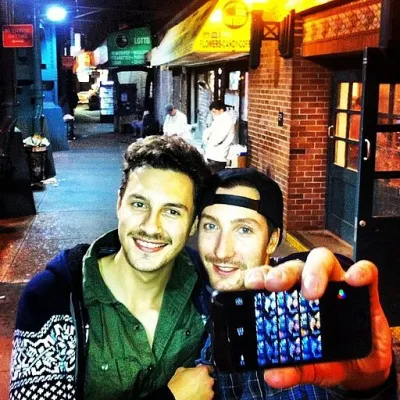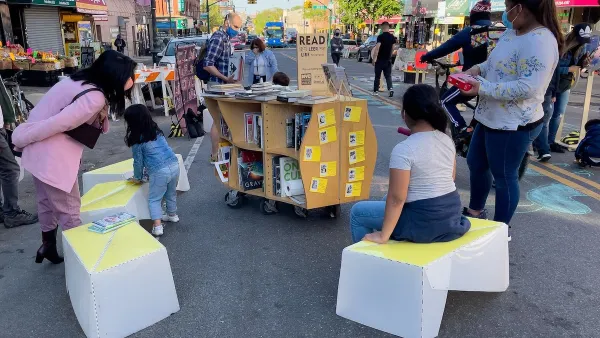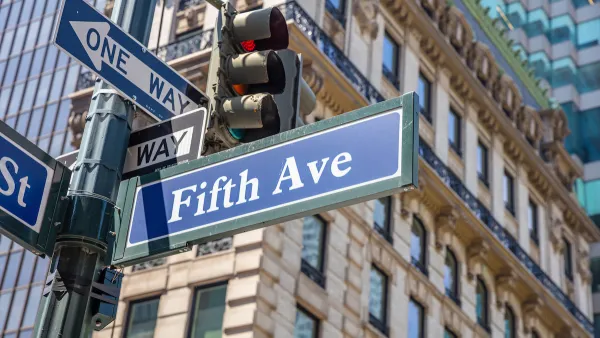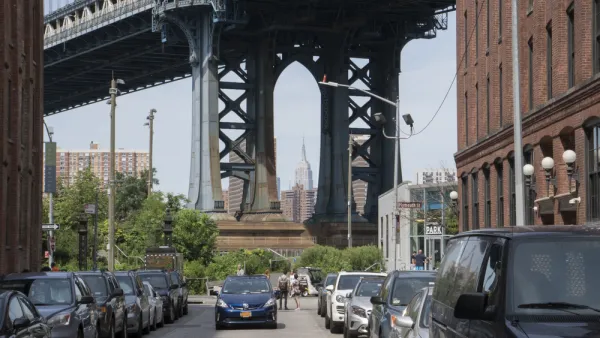Researchers who studied the appeal of New York City streetscapes find an additionally significant factor on the streets of Salt Lake City: the photo op.

A recent study by planning scholar Reid Ewing determined that three streetscape features significantly correlate to pedestrian use in NYC: active use (i.e., streets with schools, busy office buildings and parks); the presence of street furniture (such as ATMs, parking meters, and benches); and first-floor window-to-façade ratio (the proportion of windows on a building’s façade). But New York City is not called the Greatest City on Earth for nothing. As Laura Bliss writes, "There’s so much that sets New York apart from other American cities: its density, its walkability, its spread of urban versus suburban development, among others. What about smaller towns?"
Ewing’s new study of Salt Lake City suggests that to achieve walkability, planners in other cities might want to also ask: can it be Instagrammed?
The Salt Lake City study was designed to determine whether pedestrians in a less dense city with an average level of metropolitan sprawl were drawn to streetscapes with the same features found to be significant in NYC. While two of the three factors—active use and windows—contributed to the significance of what the researchers termed transparency on 179 blocks in Salt Lake City, of additional importance was the imageability of a streetscape.
Imageability, Bliss writes, "is what makes a place distinctive and memorable—a visual identity that could be made of parks or plazas, unique views or vistas, old or unusual architecture, and al fresco dining."
The relative importance of imageability is still widely unknown. However, reports last winter of young girls taking selfies in front of an active building explosion site in NYC’s East Village suggest that, as Bliss reports, "walkability is about more than density, street-level retail, or any one design quality in isolation."
FULL STORY: How Urban Designers Can Get Smaller Cities Walking

Analysis: Cybertruck Fatality Rate Far Exceeds That of Ford Pinto
The Tesla Cybertruck was recalled seven times last year.

National Parks Layoffs Will Cause Communities to Lose Billions
Thousands of essential park workers were laid off this week, just before the busy spring break season.

Retro-silient?: America’s First “Eco-burb,” The Woodlands Turns 50
A master-planned community north of Houston offers lessons on green infrastructure and resilient design, but falls short of its founder’s lofty affordability and walkability goals.

Test News Post 1
This is a summary

Analysis: Cybertruck Fatality Rate Far Exceeds That of Ford Pinto
The Tesla Cybertruck was recalled seven times last year.

Test News Headline 46
Test for the image on the front page.
Urban Design for Planners 1: Software Tools
This six-course series explores essential urban design concepts using open source software and equips planners with the tools they need to participate fully in the urban design process.
Planning for Universal Design
Learn the tools for implementing Universal Design in planning regulations.
EMC Planning Group, Inc.
Planetizen
Planetizen
Mpact (formerly Rail~Volution)
Great Falls Development Authority, Inc.
HUDs Office of Policy Development and Research
NYU Wagner Graduate School of Public Service




























